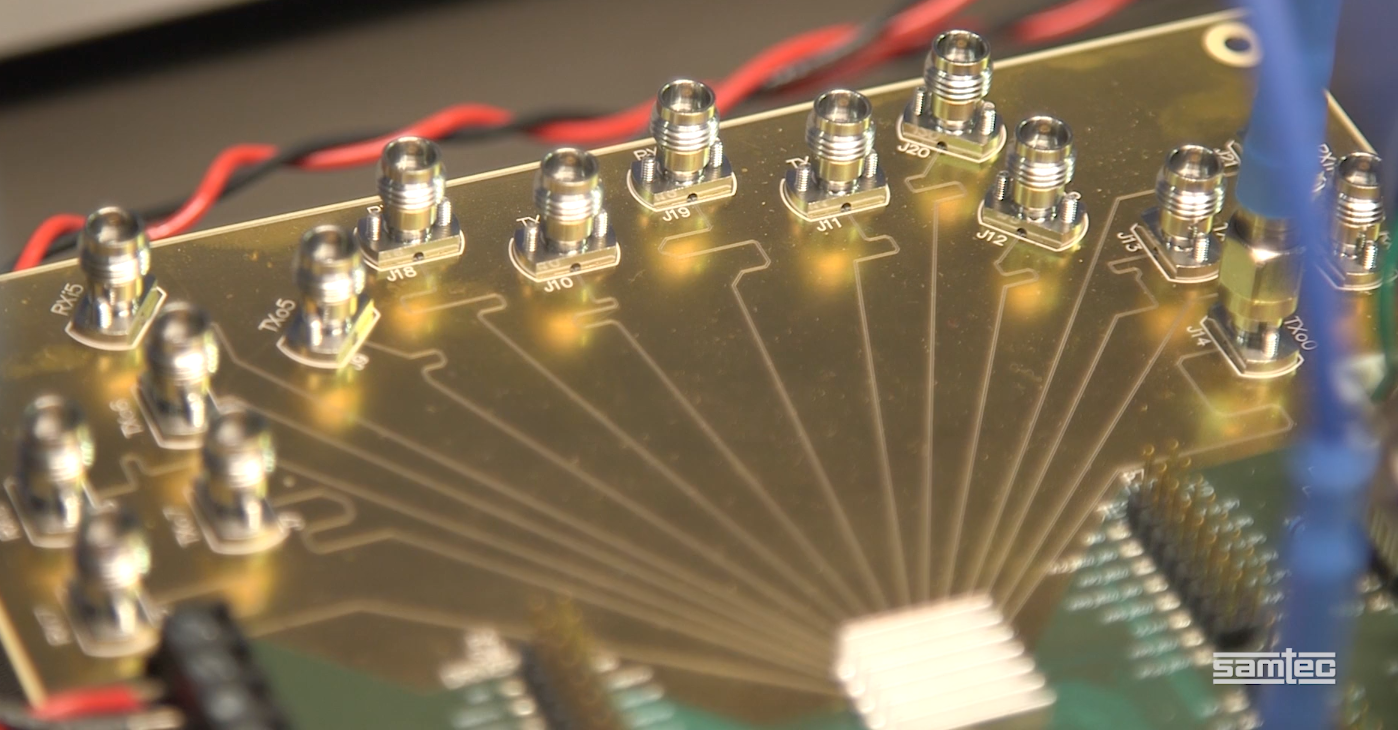
Everyone is talking about 5G deployment. The promises and the hype are finally turning into reality and products. While excitement is appropriate, victory is not yet in hand. There are still technical hurdles to conquer before the full potential of 5G is realized. In this post, I’ll explore one such challenge – the reliable use of millimeter wave (mmWave) technology for beamforming. You will see how Samtec, Otava and Avnet team up to tame 5G deployment hurdles.
Profile of the Technology
A recent article from Electronic Products does a good job profiling the challenges being addressed by Samtec and Otava. The lead statement in the article summarizes it well:
Unlocking the potential of 5G everywhere with ultra-fast mmWave speeds and low latency requires solving fundamental challenges around range, signal blockers, and proximity to a 5G tower or small cell.
The article goes on to discuss how mmWave frequencies from 24-GHz to 40-GHz hold promise for fast, low latency 5G networks. This technology does present substantial RF propagation challenges. To realize super-fast 5G network deployment at scale, designers must solve these problems. The challenges of deployment here can be summarized in one statement, mmWave 5G signals are fragile.
By fragile, I mean they are very short-range. The referenced article explains that, to receive mmWave signals, you need to be within a block or two of a 5G tower with no line-of-sight obstructions. Signals are easily blocked by buildings, walls, windows, and trees. The whole thing can give designers a headache very quickly. It turns out a promising method to deal with these issues is to use something called beamforming.
If you’re thinking the problem is solved by beamforming, think again. A bit of background is useful for those not following the technology. Beamforming is a technique that focuses a wireless signal at a target as opposed to having the signal radiate in all directions from a broadcast antenna. This results in a more direct connection that is faster and more reliable than it would be without beamforming. The science of beamforming is quite complex. There are many design challenges to be tamed here, and a lot of them are caused by real-world topology. If you want to dig into these challenges, this article from Avnet is a good place to start.
Profile of the Players
With that background out of the way, let’s examine the companies who are collaborating to deliver a solution.
SemiWiki readers should already know about Samtec. They are the company that develops the physical elements of high-performance channels – cables built out of all kinds of materials and connectors with the same broad pedigree. You can catch up on SemiWiki coverage of Samtec here. If you’re trying to build high-performance communication systems (like 5G networks), you will definitely need Samtec’s products, models and technical support.
Otava is a company focused on end-to-end development of technologies used by advanced 5G commercial and DoD applications. The organization’s core competence is phased array system and electronic design. Their portfolio includes transceivers, tunable filters, switches and, you guessed it by now, beamformer technology.
To complete the picture is Avnet, the 900-pound gorilla of distribution and support for a broad range of technology. Both Samtec and Otava are partners of Avent.
Profile of the Solution
By now, you might be thinking that the only way to tame the challenges of 5G transmission is to develop a beamforming approach that is adapted to the conditions being observed. The ability to prototype various approaches to solve the problem would be very useful. The Otava Beamformer IC Evaluation Kit, available from Avnet, is just what you should be looking for. The kit contains everything you need to prototype various beamforming solutions and test them in a real-world setting. Components in the kit include:
- Otava Beamformer IC Eval Board
- MicroZed 7010 Xilinx Zynq SOM
- Modified MicroZed I/O Carrier Card
- Two custom cable assemblies from Samtec
- C# GUI
To Learn More
There is a great video on the Avnet solution page where Samtec and Otava explain the capabilities of the kit, with suggested use models. You can also learn more about Samtec’s precision RF capabilities here. Matt Burns of Samtec recently wrote a great blog that provides another level of detail on the solutions available from Samtec and Otava, complete with photos of the boards. You can check out this informative blog here. Now you know how Samtec, Otava and Avnet team up to tame 5G deployment hurdles.
Share this post via:





Comments
There are no comments yet.
You must register or log in to view/post comments.